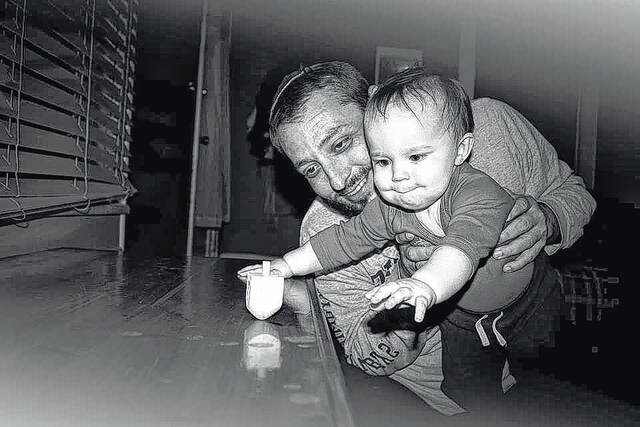
Today, the Chanukkah celebration revolves around the lighting of the menorah along with stories, blessings, and feasting. Families gather and give presents to each other, and a four sided spinning top known as a dreidle, shown above, is a traditional game for children to play. (Photo by Kasie Strickland)
A fairly rare occurrence, the first day of Hanukkah will once again coincide with the Christmas holiday, celebrated by Christians world-wide December 25. The first day of the Jewish holiday has coincided with Christmas only four other times in history; 1910, 1921, 1959, and 2005.
Hanukkah is also known as Chanukah or the Festival of Lights. The eight day holiday begins at sundown on the 25th of Kislev on the Hebrew calendar, which usually occurs in November or December.
This year, Hanukkah will start at sundown on December 25 and end January 2, 2025.
The eight-day holiday is celebrated in remembrance of the Jewish warriors, known as the Maccabees, who overthrew their oppressors, the Greek-Syrians, in the second century.
When the Jews reclaimed their temple, they found a single container of oil, which was enough to keep the candelabrum [menorah or Hanukiah] lit for one day, but instead stayed lit for eight, in what is now known as the “Hanukkah miracle.”
For at least 1,800 years, lighting a menorah has been the main tradition of the holiday. Early sources claim initially only one candle was lit to mark the rededication of the Temple, and to light the sacred menorah.
Eventually, the holiday tradition changed over time, as so many do, to lighting eight candles, one each night of the holiday season, in remembrance of the lamp oil that miraculously burned for eight days.
Since the change, menorahs now have nine branches to hold eight candles, along with one, the shammash, that is used to light the other eight.
The tradition of placing the Hanukkiah or menorah, in the window of their homes, is the Jews way of letting the world know of the miracle their God performed for them.
It may surprise many Christians to know that Jesus too celebrated Hanukkah, though it was called “the Feast of Dedication” during His time.
Foods enjoyed during the holiday are often fried in oil to further reinforce the memory of the Hanukkah miracle. Lauded holiday dishes are often oil-based or dairy foods, such as potato latkes, sufganiyot (Isreli jelly-filled donuts) or challah, which is Jewish bread made to represent manna.
Another tradition of the holiday is the giving of “gelt” which is the Yiddish word for “money.” This tradition seems to have stemmed from the 16th century and refers to the Italian and Sefardic tradition of collecting money to buy or make clothing for economically challenged students in local schools.
During the 19th century, Jews living in Eastern Europe started giving coins directly to their children as Hanukkah gifts, in what was likely a nod to the earlier tradition. Immigrants to America brought the tradition with them.
During the 1920s, American confectioners started producing chocolate wrapped in gold foil with symbols from the Maccabees pressed into them as a way to capitalize on this Jewish custom.
The chocolate coins are often used when playing dreidel.
A child’s toy, dreidels are one of the most easily recognized items of Hanukkah, after the menorah, of course.
There is some dispute over when dreidels became mainstay items of the holiday; folklore says they have always been an item associated with Hanukkah, while Jewish scholars say they did not make an appearance in Jewish documentation until around the 18th century.
While Hanukkah songs do not get quite the radio airplay time as ones devoted to Christmas, there are several songs associated with the Jewish holiday. The most famous is a poem titled “Maoz Tzur” which is sung as a song of praise. Other popular songs in the Jewish community to celebrate their holiday are; “Hanukkah, Oh Hanukkah,” and “I Have a Little Dreidel.”
Beside the “Maoz Tzur,” another famous holiday song is “Light One Candle,” which was recorded by Peter, Paul, and Mary in 1982, appearing on their 1986 No Easy Walk to Freedom album.
The song begins by telling of the Maccabees’ fight for freedom, before segueing into praise for 20th century freedom fighters.
Reach Lauren Monica at lmonica@ansonrecord.com

